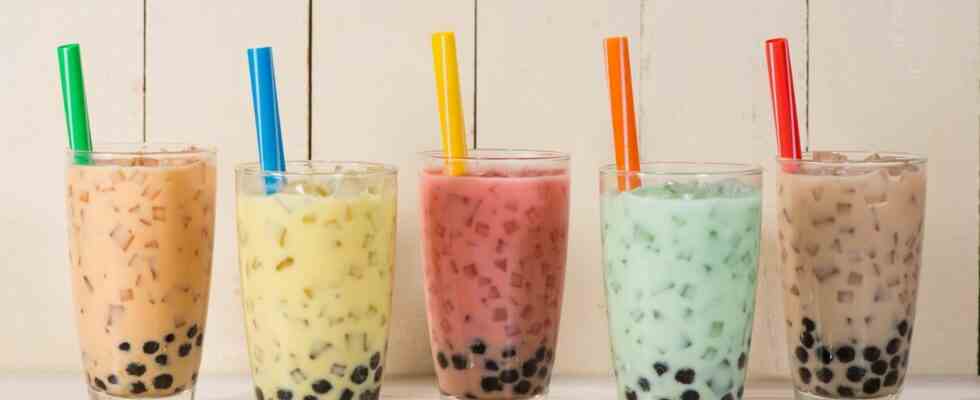Cult drink from Taiwan
Google celebrates bubble tea with a doodle
Bubble tea comes in a variety of flavors. The highlight are the pea-sized beads of starch, which are sucked through a thick straw.
© Imago Images
More than ten years ago, the bubble tea wave swept from Taiwan to Germany. The colorful drink with the slimy balls is particularly popular with children and young people. But doctors and scientists advise caution when consuming it.
The really big hype is now 14 years ago. In 2009, bubble tea came to Germany from Taiwan. The colorful and sweet mixture of green or black tea, with milk and fruit syrup and the characteristic pea-sized tapioca balls in it quickly became popular, especially among children and young people. Bubble tea shops were springing up like mushrooms all over Germany, with long lines forming in front of them. McDonald’s also got into the tea business and sold the drink in its McCafé branches. Almost on every corner you could see young people with transparent plastic cups sipping tea through thick straws.
But the popular pearl tea, which is also known internationally as Pearl Milk Tea or Boba Boba and which is now available in countless flavors, quickly attracted doctors, nutritionists and consumer advocates who warned against it. Small children could easily choke on the pea-sized starch balls. The tea is also very high in calories. According to the North Rhine-Westphalian consumer advocates in Düsseldorf, it contains a lot of sugar, so that a small 300 milliliter cup can contain 300 to 500 kilocalories. That is up to three times as much as a cola. Colors and additives contained therein are also not recommended for allergy sufferers.
Google celebrates bubble tea with a doodle
Two years ago, a 13-year-old boy ended up in the hospital in the Chinese province of Henan. The boy complained of abdominal pain and constipation. X-rays showed an intestinal obstruction. As it turned out, he hadn’t chewed the starchy and hard-to-digest tapioca pearls, but swallowed them whole. As a result, two solid lumps had formed in his intestines. A year earlier, a 14-year-old – also in China – showed the same symptoms. She had more than 100 of the sticky globules in her digestive tract.
Even if the hype surrounding bubble tea in Germany has died down in the meantime, the sugary drink is still popular in countries such as China and especially Thailand. On Sunday, Google is celebrating the shake with an interactive doodle where anyone can create a bubble tea by virtually combining the ingredients.
Sources: DPA, “Daily Mail”, That’s Tianjin, Editorial network Germany


